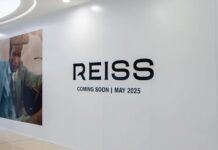The retail environment has witnessed many changes during the past couple of years. Having found out that “traditional” management tools have become less relevant, brands were forced to rethink their processes to survive, stay relevant and true to their audiences.
During and following the pandemic, retail formats have changed on several levels. On the one hand, operational changes and on the other hand, changes linked to the user experience. If experience has become an integral part of brand strategy, it is because brands are more customer-focused than ever. Within the context of Omni channels, retail formats have also undergone significant development and have become more responsive to the retail environment and customers. Physical retailing has recovered its glory and has taken its rightful place alongside other retail formats such as digital or metaverse.

As consumption is becoming less focused on the product and more focused on the experience of accessing the product, new brand management practices are being shaped, whether at luxury or mass industry levels. Bands are looking at ways to add value to the customer’s journey within their spheres.
With physical touchpoints, they seek to deliver “in real life experiences” by paying attention to in-store atmospherics and outside environmental designs. Moreover, brands are refocusing on the “human” variable and on rehumanizing physical commerce. Online user experience is developing and coming closer to delivering hyper-simplified information queries and/or transaction processes. In addition to perfecting each brand touchpoint’s management, it is the liaisons that matter the most in an omnichannel context. Brands ensure a frictionless journey “from and to”, at any time, from any location and through any device or touchpoint.
Acknowledging the power of technology
Technology has opened infinite opportunities for brands to connect and get in touch with their audiences. This connection goes beyond giving access to the online sphere; it assembles, shortens distances, and paves the way for greater interactions. With current retail management practices, brands focus on making digital experiences more physical. They adopt digital tools such as in-store augmentation, to provide customers with support about products, if needed, through applications or digital technologies.
Brands also invest in social platforms to deliver more frequent live-streaming sessions. They have legitimized one-to-one selling through social and/or mobile applications. Many brands have taken one step further to focus on clienteling services to offer personalized experiences. To conclude, brands that aimed at investing more in the social variable have replicated the experience of shopping with friends through devices, like squad shopping and group buying.
Retail formats in an omnichannel context ensure a seamless experience
In an omnichannel retail environment, each retail format becomes an active contributor to a positive customer experience. In that context, different retail formats functionalities are enhanced, technologies integrated, and their management rethought. In addition, marketing and communication strategies are put at the service of the “ensemble“, thus contributing to delivering a seamless experience.
To enable real-time inventory management, brands include RFID (radio frequency identification) tags. They can easily trace their product to the store and then to consumers. To improve the in-store shopping experience and make it easier for customers to make in-store purchases, retailers integrate cashier less tills. In other cases, retailers have opted for WIWO (Walk-in-walk-out) technologies, which eliminates the expectation of payment in stores. Retailers also set up sensors around certain products or spaces that automatically send discounts to smartphone customers via the store’s app. They offer personalised and hyper-personalised suggestions or offers. A smooth shopping experience is very similar to knitting all the brand’s touchpoints into one fabric. With their mobile phones (or smartphones), customers connect all points of contact online and offline and establish their relationship with the brand.
An array of forms and formats
Physical stores are increasingly becoming an objective format, designed to address a specific brand objective in an omnichannel environment. Physical retail formats are now used for everything from product access to service to experience. Many physical stores remain points of direct access to the product, others incorporate aesthetics and experience, and some are merely informational. Some physical retail formats that are very relevant to the real retail environment are demonstration stores, rental stores, repair stores, pop-up stores, and corner stores.
No product is sold in a demonstration store. The offer is put at the disposal of the customer to examine or test, then the customers would receive their order at the desired address. Rental platforms for individuals are already available, as well as those that meet the needs of professionals. But few initiatives launched by conventional stores aim to meet the specific needs of each client. And with the rise of the circular economy, the second-hand market has expanded; it has encouraged brands to repair and resell items returned to them. Adopting pop-up stores is ideal to test and experience the brand. More importantly, pop-up stores are perfect for reducing the distance between brands and customers, and for creating more interactions. Finally, around-the-corner stores are those situated in proximity. These small urban stores bring hyper stores nearby.
This is only proof that physical retail is not dead; it is stronger than ever. To be more efficient, physical retail needs to serve a clear purpose within the overall brand touchpoints. Moreover, it should be able to bridge the physical with the digital brand spheres. In today’s retail environment, the physical store continues to offer an important platform for everyday conviviality and togetherness.
Engaging the senses
In the context of the digital revolution, physical retail formats remain key to delivering sensory and engaging shopping experiences. More importantly, they are a means of expression and allow social interactions (brand/client & client/client). More recently, many physical stores are in broadcast studios and customers are a crowd. Brand-customer relationships transcend the physical realm to grow online or outside the transactional pattern of brands.
The design of the shops is more and more theatrical, with the goal of creating moments that cannot be reproduced online. Designing stores in the direction of a multi-sensory atmosphere provides buyers with relevant experiences. It also allows them to immerse themselves and get involved, in the atmosphere of detail, with their five senses. More importantly, these investments are about simplifying or oversimplifying the customer relationship. Thanks to physical retail environments, the brand integrates its clients into its rituals and invites them to get involved in the brand culture.
What lessons can be learned?
Today’s brand management is successful when it crafts and delivers exceptional customer experiences, connects customers to the brand’s universe and finally shares with them all knowledge about its culture and traditions. In an omnichannel retail environment, high-end and low-end brands must keep customers at the centre of their distribution and communication strategies.
- Retailers invest in the physical store’s atmosphere.
- Retailers implement digital transformation plans designed to create a richer experience for consumers.
- Retailers give space to customers and allow them instant gratification.
- Retailers re-inject the social dimension in their physical and digital atmosphere: the availability of friendly and knowledgeable store staff is the most important factor when creating a pleasant experience.
- Services and/or practices that are related to sustainability positively influence customer decisions to visit a physical store: reparations, rentals, and complimentary services.
- To service the “now economy”, retailers are invited to look at how they can use their physical store estate to add functionality such as click and collect, ship from store, shop now, pay later options and in-store returns.
- Physical retail atmospheres should become places of expression and transcend the mere procurement function.

















